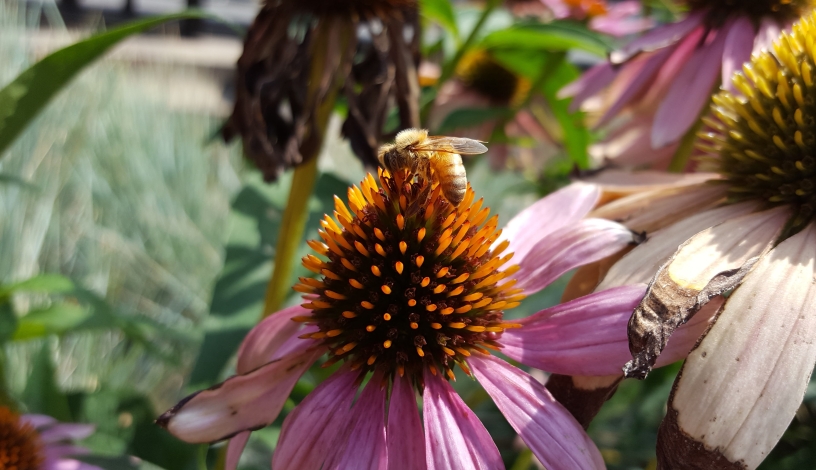Short one today. When my girlfriend was a beekeeper co-op, I learned more about bees than I ever thought I could learn. Did you know that banana laffy taffy will anger bees and make them sting you? The reason is isoamyl acetate, which we use as a banana flavor and fragrance. At the same time bees use it as an aggression pheromone. When a bee stings a person, the stinger breaks off and releases the pheromone into the air, alerting other bees of danger and rousing them to attack. It’s honestly interesting how this was determined in 1962, starting from a simple observation and then testing. Also, honeybees are European in origin, so they cannot go extinct in the Americas because they are not native to here. Apparently that is an important part of defining whether something can be considered extinct.
An article was recently released out of University of Texas, Austin titled “Glyphosate perturbs the gut microbiota of honey bees” (also on C&EN) which finds that glyphosate, the primary ingredient in Roundup, causes bacteria in the honeybees digestion system to stagnate. The bacteria don’t die, but they don’t grow or replicate by shutting down synthesis of key amino acids. This in turn weakens the bee by starving them (since they can’t properly digest their food) and weakens their resistance to infection. This might not be the sole reason for Colony Collapse Disorder that was occurring a decade ago, but it can help answer why bee colony failure is so high now. I wonder if the glyphosate can spread from bee to bee after it is consumed, or if it’s only direct from food and environment. I know bees can only poop while flying so that shouldn’t be a vector, and Roundup is so common that it’s probably irrelevant. Maybe it can be possible for beekeepers to enrich sugar water fed to bees with these bacteria to help maintain healthy concentrations in the gut. The C&En specifically suggested timing application time, probably to avoid using it during the main nectar flows of the season.
I’m working on a longer write-up for next week on a pretty bulky but excellent article, and will hopefully have that done by then.
Addendum (10/23/18): I got into a conversation regarding how many bees it would take to lift a person. Assuming the average weight of a human being is roughly 175 lbs, and the European honeybee can lift its own weight of 90 milligrams, it would take 882,000 bees to carry a person. I also have it on good authority that 15 mL of bee is roughly 30-40 bees. That would mean 378 L of closely packed bee are needed, or roughly 100 gallons. Assuming a bee will need some space to fly (a cube the length of a bee, 15 mm, the wingspan of a bee, 25.4 mm, and some height, 10 mm), then you have a veritable force of 3360 L of bees, or 888 gallons. It’s still more bees than I would like to see at any given time.
Edit: Corrected a misspelling of a word
